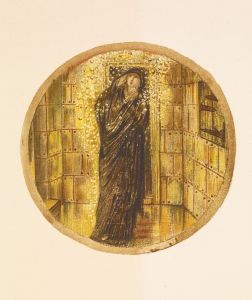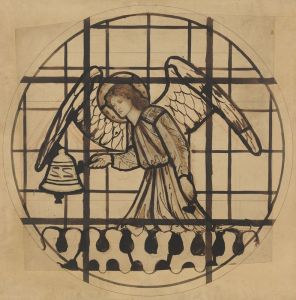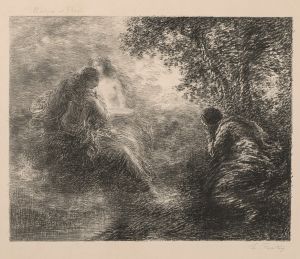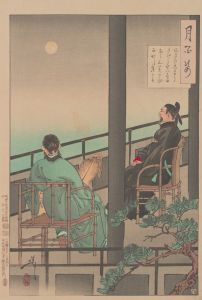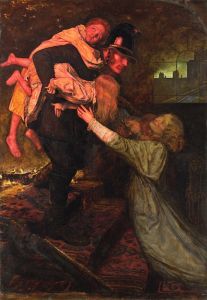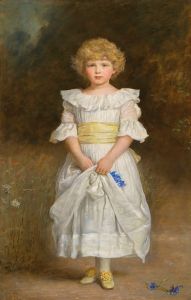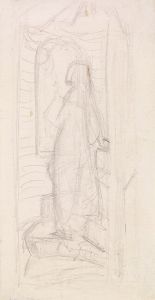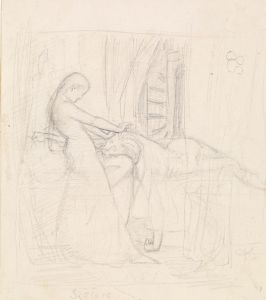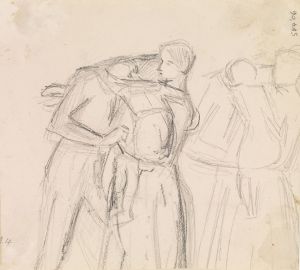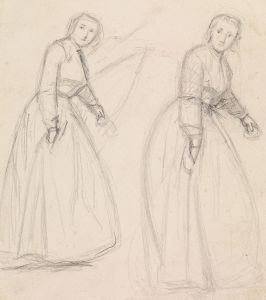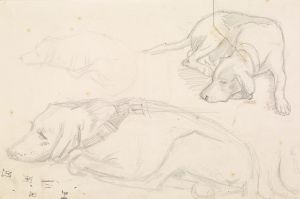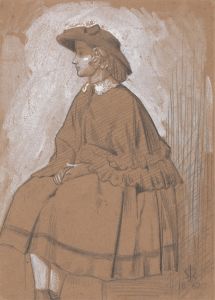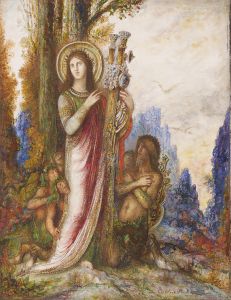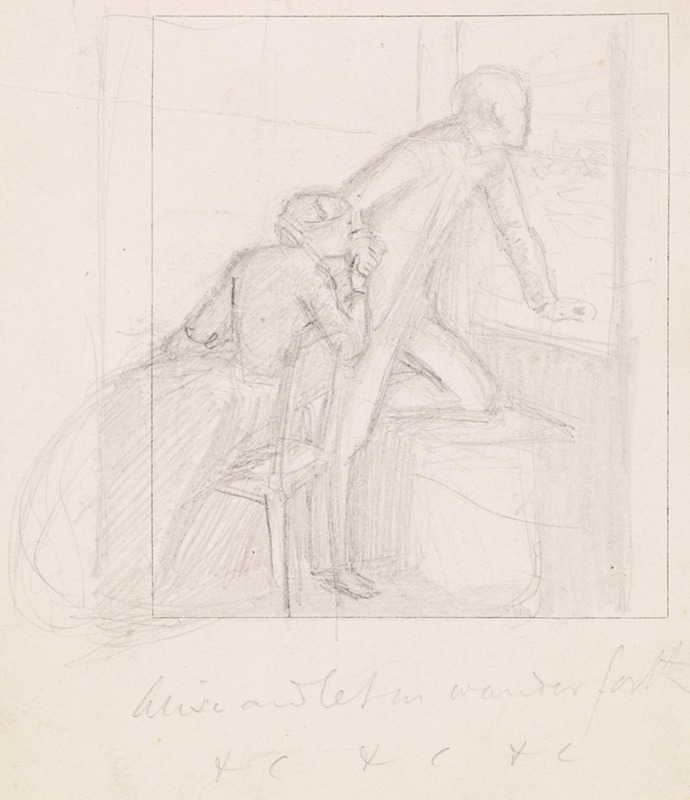
Tennyson’s The Miller’s Daughter – Study for Husband and Wife in Arise and Let us Wander Forth
A hand-painted replica of Sir John Everett Millais’s masterpiece Tennyson’s The Miller’s Daughter – Study for Husband and Wife in Arise and Let us Wander Forth, meticulously crafted by professional artists to capture the true essence of the original. Each piece is created with museum-quality canvas and rare mineral pigments, carefully painted by experienced artists with delicate brushstrokes and rich, layered colors to perfectly recreate the texture of the original artwork. Unlike machine-printed reproductions, this hand-painted version brings the painting to life, infused with the artist’s emotions and skill in every stroke. Whether for personal collection or home decoration, it instantly elevates the artistic atmosphere of any space.
Sir John Everett Millais, a prominent figure in the Pre-Raphaelite Brotherhood, created the painting "Tennyson’s The Miller’s Daughter – Study for Husband and Wife in Arise and Let us Wander Forth" in the mid-19th century. This artwork is a study for a larger, more comprehensive piece inspired by Alfred Lord Tennyson's poem "The Miller's Daughter," which was first published in 1832 and later revised in 1842.
Millais, born in 1829, was a child prodigy who entered the Royal Academy of Art at the age of 11. He co-founded the Pre-Raphaelite Brotherhood in 1848 along with Dante Gabriel Rossetti and William Holman Hunt. The Brotherhood sought to return to the detailed, vibrant, and complex compositions of art prior to the High Renaissance, rejecting what they saw as the mechanistic approach first introduced by Mannerist artists who followed Raphael and Michelangelo.
"The Miller’s Daughter" by Tennyson tells the story of a miller’s daughter and her suitor, who eventually become husband and wife. The poem is rich with pastoral imagery and explores themes of love, nature, and the passage of time. Millais was known for his ability to translate literary themes into visual art, capturing the essence of the text through meticulous attention to detail and vibrant color palettes.
In "Tennyson’s The Miller’s Daughter – Study for Husband and Wife in Arise and Let us Wander Forth," Millais focuses on a specific moment from the poem where the newly married couple is depicted in a serene, natural setting. The study likely served as a preparatory work, allowing Millais to experiment with composition, lighting, and the portrayal of the characters' emotions before committing to the final piece.
Millais's technique in this study reflects the Pre-Raphaelite emphasis on realism and naturalism. The figures are rendered with precise anatomical accuracy, and the surrounding landscape is depicted with an almost photographic attention to detail. This approach was intended to evoke a sense of immediacy and intimacy, drawing the viewer into the scene and allowing them to experience the emotions of the characters firsthand.
The study also demonstrates Millais's skill in capturing the subtleties of human expression and interaction. The husband and wife are shown in a moment of quiet companionship, their body language and facial expressions conveying a deep sense of mutual affection and contentment. This focus on the emotional connection between the characters is a hallmark of Millais's work and a key element of the Pre-Raphaelite aesthetic.
Millais's study for "Tennyson’s The Miller’s Daughter" is a testament to his ability to blend literary inspiration with artistic innovation. By meticulously crafting a visual narrative that complements Tennyson's poetic imagery, Millais created a work that resonates with both art and literature enthusiasts. The study remains an important example of the Pre-Raphaelite Brotherhood's contributions to 19th-century art and their enduring influence on the portrayal of literary themes in visual media.





